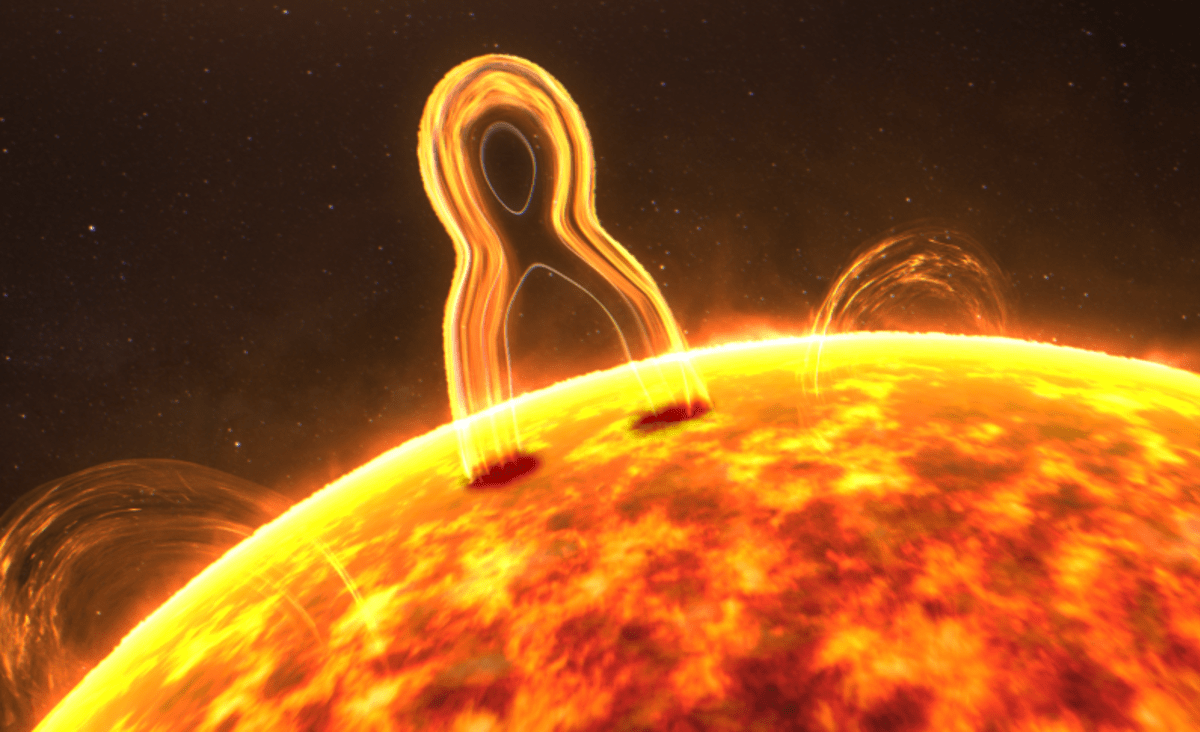
interestingengineering.com
NASA scientists solved a 60-year-old mystery about explosions on the Sun
NASA scientists have revealed that a type of solar flare that lasts minutes produces enough energy to power Earth for 20,000 years at a predictable and rapid rate.
Science & Tech
NASA scientists solved uncovered one of the Sun's many secrets.
A type of solar flare that lasts minutes produces enough energy to power Earth for 20,000 years at a predictable and rapid rate.
Scientists have been trying to understand the process, called fast magnetic reconnection, for more than half a century, and researchers at NASA may have just figured it out, a report from the space agency reveals.
New investigation boosts the pursuit of limitless energy
The discovery could provide new insight into processes that could have practical applications on Earth, such as nuclear fusion, which aims to harness the same type of energy as the Sun and the stars. It could also allow for more accurate predictions of geothermal storms, which can affect electronics equipment such as satellites.
"Ultimately, if we can understand how magnetic reconnection operates, then we can better predict events that can impact us at Earth, like geomagnetic storms and solar flares," explained Barbara Giles, project scientist for MMS and research scientist at NASA's Goddard Space Flight Center in Greenbelt, Maryland.
"And if we can understand how reconnection is initiated, it will also help energy research because researchers could better control magnetic fields in fusion devices," she continued.
The NASA scientists, from its Magnetospheric Multiscale Mission (MMS), developed a theory that explains the processes occurring during fast magnetic reconnection, the name given to the very fastest type of magnetic reconnection. They published their findings in a paper in the journal Nature Communications.
"We finally understand what makes this type of magnetic reconnection so fast," said the lead author of the study, Yi-Hsin Liu. "We now have a theory to explain it fully."
Magnetic reconnection occurs in plasma, which forms when gas has been energized enough to break its atoms apart, leaving behind negatively charged electrons and positively charged ions. During the process, the plasma rapidly converts magnetic energy into heat and acceleration.
Fast magnetic reconnection, in particular, has puzzled scientists due in large part to the predictable nature in which it occurs. "We have known for a while that fast reconnection happens at a certain rate that seems to be pretty constant," Giles said. "But what really drives that rate has been a mystery, until now."
Investigating the processes of the Solar System
The new research indicates that fast reconnection occurs only in collisionless plasmas — a type of plasma whose particles are spread out to the point that they don't collide with one another. In space, where fast reconnection occurs, most plasma is in this collisionless state.
The new theory also suggests that fast reconnection is sped up by the Hall effect, which describes the interaction between magnetic fields and electric currents, NASA explained in its statement. During fast magnetic reconnection, ions and electrons move separately, and the Hall effect starts to create an unstable energy vacuum that leads to reconnection. The pressure of the surrounding magnetic fields causes the energy vacuum to implode, which violently releases massive amounts of energy at a predictable rate.
Plasma is very sensitive to magnetic fields, which is why nuclear fusion reactors, called tokamaks, utilize powerful magnets to maintain plasma during the fusion reaction. The next step for the NASA MMS scientists is to test their theory with the help of four spacecraft orbiting Earth in a pyramid formation, allowing them to investigate the process of reconnection in collisionless plasmas at higher resolutions than would be possible on Earth. The findings might help unlock the potential of nuclear fusion, which promises to provide limitless sustainable energy here on Earth.
























































